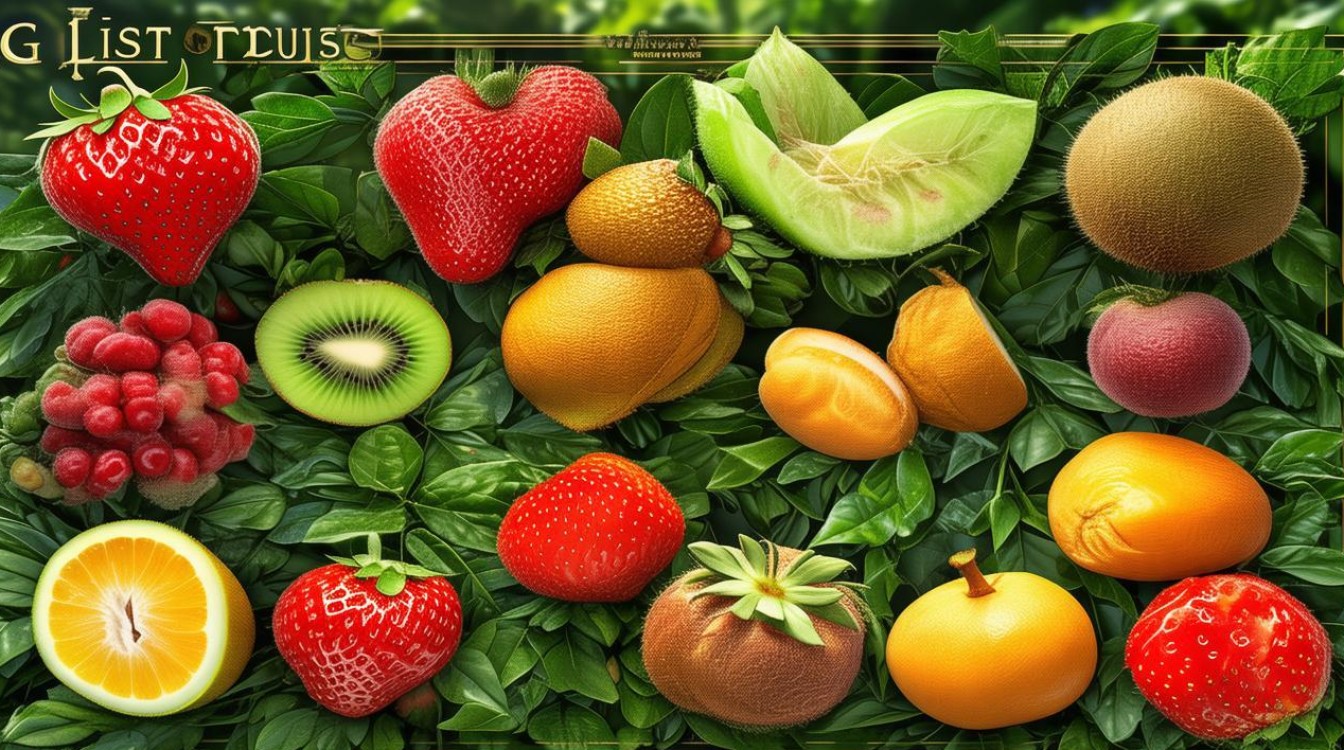Fruits beginning with the letter "G" offer a vibrant mix of flavors, textures, and nutritional benefits. From tropical delights to everyday staples, this collection showcases nature’s diversity. Whether you’re a food enthusiast or a health-conscious individual, discovering these fruits can enrich your diet and culinary experiences.

Grapefruit (Citrus × paradisi)
A citrus hybrid with a tangy-sweet profile, grapefruit is packed with vitamin C, fiber, and antioxidants. Its varieties range from pink to white flesh, each offering distinct levels of sweetness. Studies suggest grapefruit may aid metabolism and heart health, though it interacts with certain medications, so consult a doctor if unsure.
How to Enjoy:
- Add segments to salads for a refreshing twist.
- Juice it for a morning detox drink.
- Sprinkle with honey to balance the tartness.
Grapes (Vitis vinifera)
One of the world’s oldest cultivated fruits, grapes come in green, red, and black varieties. They’re rich in resveratrol, a compound linked to heart health, and their natural sugars make them a quick energy source.
Fun Fact: Over 70% of global grape production is used for winemaking.
Serving Ideas:
- Freeze for a cool snack.
- Pair with cheese for a classic combo.
- Blend into smoothies or sorbets.
Guava (Psidium guajava)
This tropical fruit boasts a fragrant aroma and a flavor reminiscent of strawberries and pears. Guava is a vitamin C powerhouse—one fruit exceeds daily requirements—and its seeds provide digestive fiber.
Nutrition Spotlight:
- High in folate, potassium, and lycopene.
- Low glycemic index, suitable for diabetics.
Creative Uses:
- Make jams or chutneys.
- Blend into juices or cocktails.
- Eat raw with a pinch of chili salt.
Gooseberry (Ribes uva-crispa)
These small, tart berries thrive in temperate climates. Gooseberries are loaded with vitamins A and C, supporting immunity and skin health. Their acidity makes them ideal for preserves or savory dishes.
Culinary Tips:

- Bake into pies or crumbles.
- Stew with sugar for a compote.
- Pickle for a tangy condiment.
Granadilla (Passiflora ligularis)
A cousin of passionfruit, granadilla has a hard shell hiding gelatinous, seed-filled pulp. Its floral sweetness and high fiber content make it popular in Latin America.
Why Try It?
- Soothes digestion and promotes sleep (contains natural sedatives).
- Excellent for desserts or yogurt toppings.
Ground Cherry (Physalis spp.)
Also called cape gooseberry, this golden fruit is encased in a papery husk. Its pineapple-like taste and high vitamin A content make it a unique addition to diets.
Ways to Eat:
- Toss in salads for crunch.
- Dip in chocolate for a gourmet treat.
- Dry for a chewy snack.
Greengage (Prunus domestica)
A plum variety with greenish-yellow flesh, greengages are exceptionally sweet and juicy. They’re prized in European baking for their honeyed flavor.
Health Perks:
- Rich in antioxidants like chlorogenic acid.
- Supports bone health with vitamin K.
Recipe Idea:
- Roast with cinnamon for a simple dessert.
Guanabana (Annona muricata)
Known as soursop, this spiky fruit has creamy, citrusy pulp. It’s traditionally used in beverages and ice creams, though claims about its medicinal properties require more research.
Caution: Avoid excessive consumption due to potential neurotoxins in seeds.
Jabuticaba (Plinia cauliflora)
A Brazilian gem, jabuticaba grows directly on tree trunks. Its dark skin and grape-like flesh are used in wines, jellies, and liqueurs.

Did You Know?
- Ferments quickly, often consumed within days of harvesting.
Gambooge (Garcinia gummi-gutta)
Also called Malabar tamarind, this sour fruit is a key ingredient in Asian curries and weight-loss supplements. Hydroxycitric acid (HCA) in gambooge may curb appetite, but evidence is mixed.
Cooking Tip:
- Use dried rind to flavor fish dishes.
Genip (Melicoccus bijugatus)
Common in the Caribbean, genip has lychee-like flesh surrounding a large seed. Its tangy-sweet taste is perfect for fresh eating or syrups.
Governor’s Plum (Flacourtia indica)
This small, tart fruit is often pickled or made into jams. It thrives in arid regions and provides iron and vitamin C.
Grumichama (Eugenia brasiliensis)
Resembling a cherry, grumichama has a sweet, slightly astringent flavor. It’s eaten fresh or turned into preserves.
Gac (Momordica cochinchinensis)
A Southeast Asian fruit loaded with beta-carotene, gac is used in sticky rice dishes and wellness tonics.
Guarana (Paullinia cupana)
While primarily known for its caffeine-rich seeds, guarana’s fruit pulp is edible and used in energizing drinks.
Final Thoughts
Exploring "G" fruits reveals a world of flavors and health benefits. From the familiar grape to the exotic jabuticaba, each fruit brings something unique to the table. Incorporating these into meals can boost nutrition and add excitement to your palate. Next time you shop, consider reaching for a fruit you haven’t tried—it might just become a new favorite.





